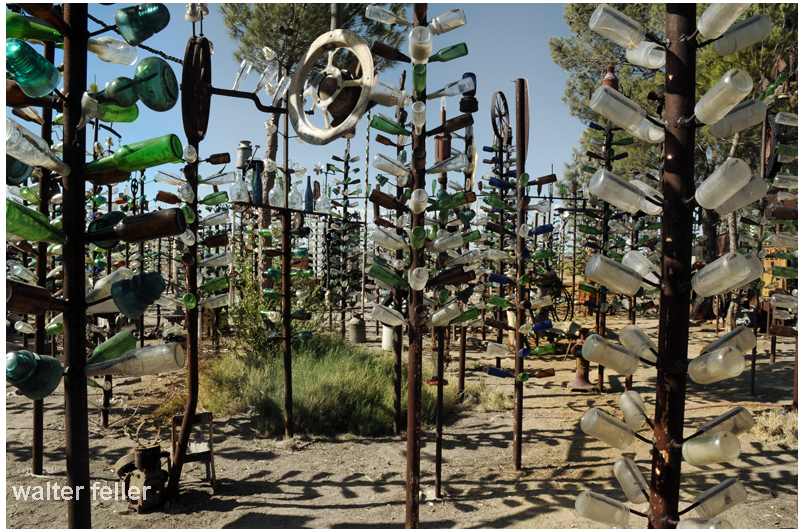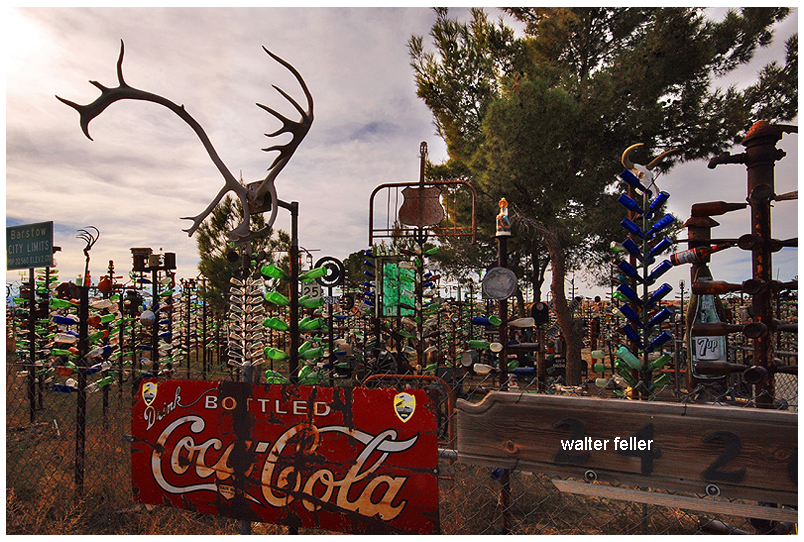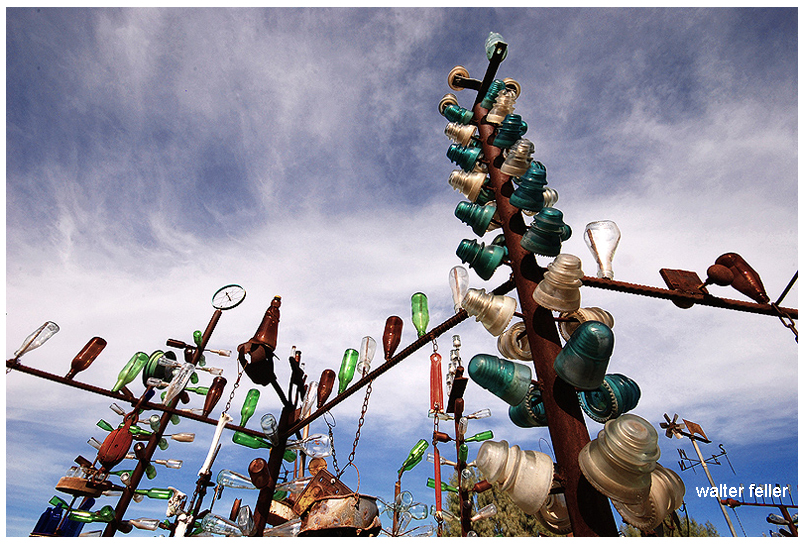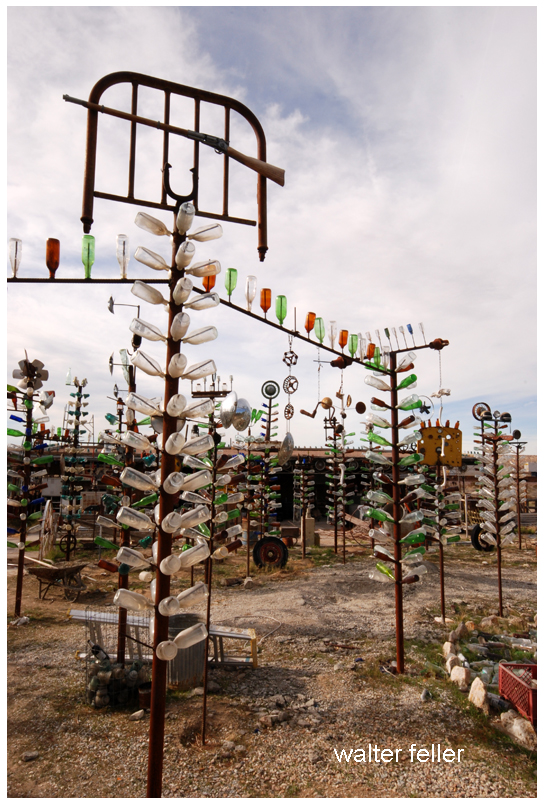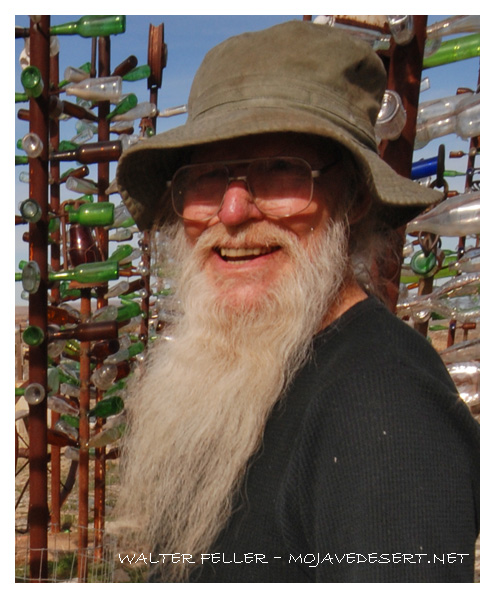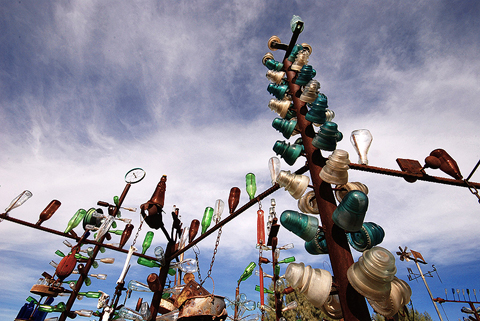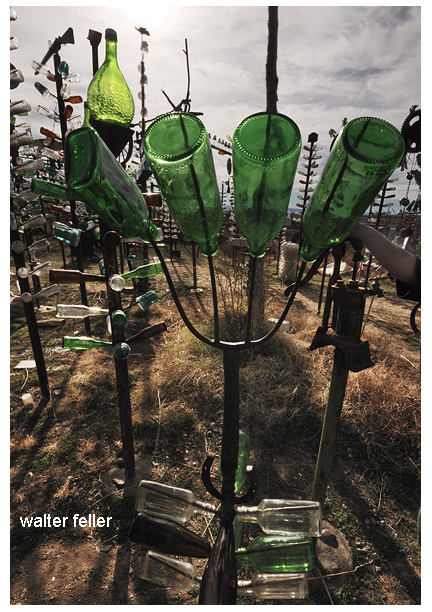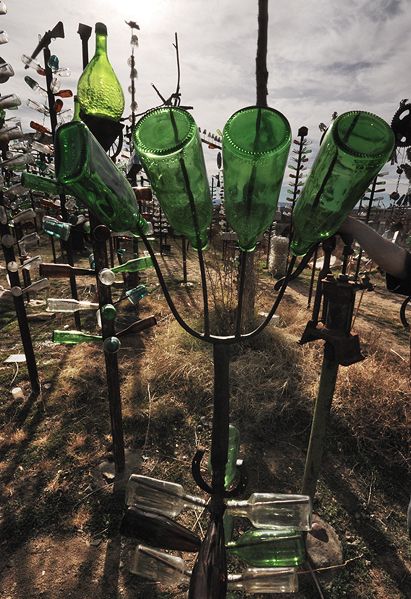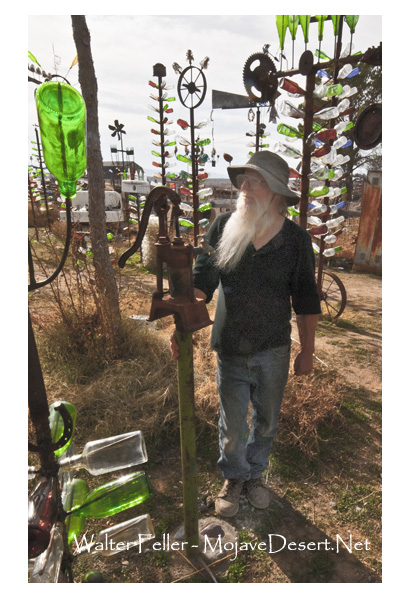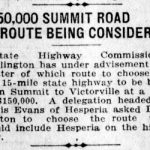Elmer Long’s place — Historic Route 66 – Helendale, Ca.
Category: Route 66
By-Passing Barstow
Bits from an interesting 1961 article about by-passing downtown Barstow and modernizing transportation infrastructure at the geographical descendant of ‘Forks-in-the-Road‘ of pioneering times. Speaks to the morphology of the transportation corridor from the classic Route 66 to the modern Interstate 15 Freeway. Also, see Sidewinder Road for maps between Victorville and Barstow.
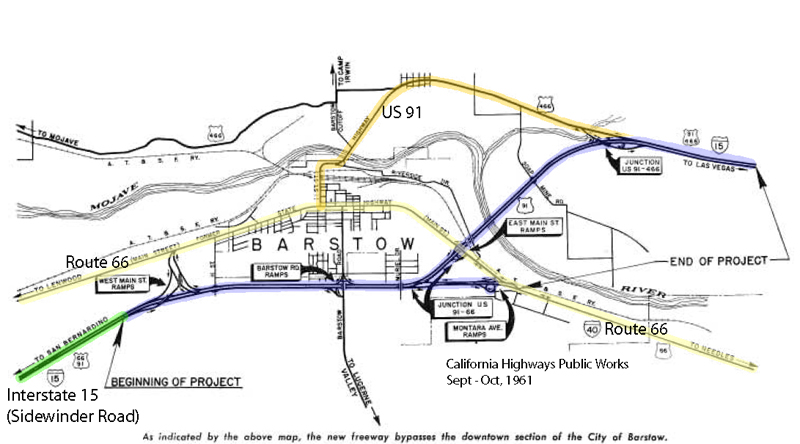
On July 5, nine miles of the Barstow Freeway, known locally as the “Barstow By-Pass”, were opened to traffic by construction contractors Gordon H. Ball and Ball & Simpson.
The project is an extension of the 24-mile freeway from Victorville to Barstow which was opened in January 1959. It makes available the improvement to full freeway standards of an important link of Federal Interstate Route 1 S (U.S. 91) and the first step of freeway improvement of Interstate Route 40 (U.S. 66) toward Needles.
California Highways, Sep/Oct 1961.
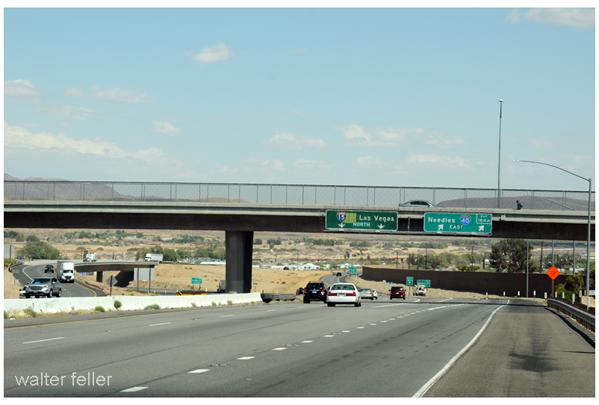
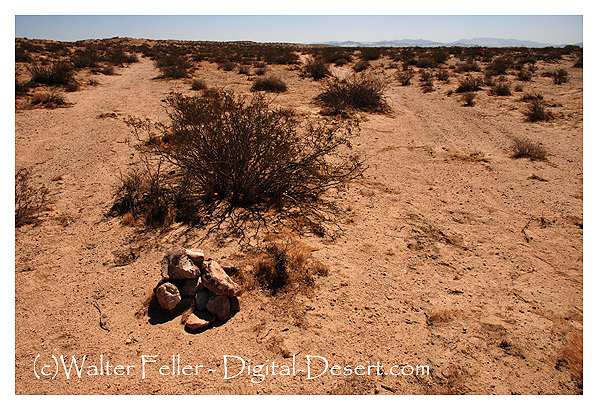
Macadam
In 1873 Scottish inventor John Loudon McAdam created an inexpensive type of paving that used rocks and gravel, was put down while it was soft and cured as it was driven on.
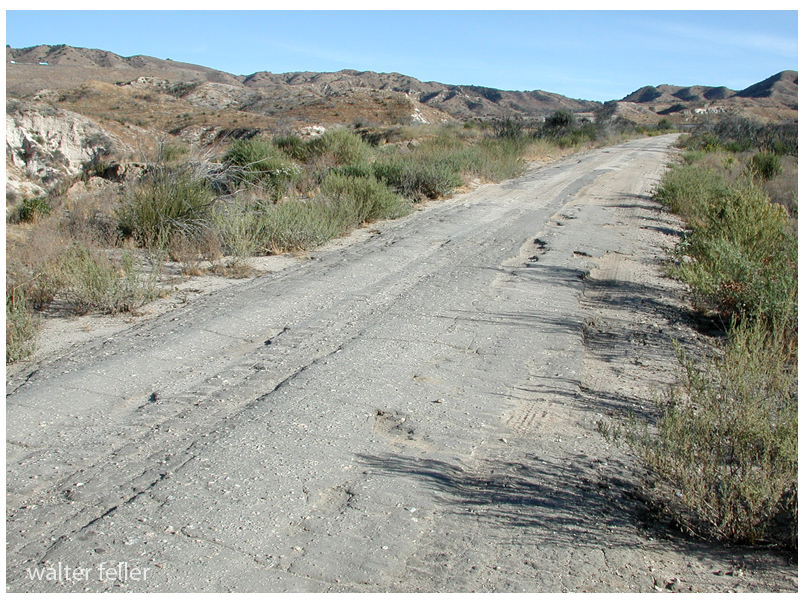
John Loudon McAdam and Macadam
Merriam-Webster: In 1783, inventor John Loudon McAdam returned to his native Scotland after amassing a fortune in New York City. He became the road trustee for his district and quickly set his inventiveness to remedying the terrible condition of local roads. After numerous experiments, he created a new road surfacing material made of bits of stone that became compressed into a solid mass as traffic passed over them. His invention revolutionized road construction and transportation, and engineers and the public alike honored him by using his name (respelled macadam) as a generic term for the material or pavement made from it. He is further immortalized in the verb macadamize, which names the process of installing macadam on a road.
Sagebrush Inn: Route 66
Now, there is no question that Bessie catered to some wild goings on at the Sage Brush Inn, but the thing that seems to titillate people is the rather persistent rumor that she was a madam and operated a brothel. This rumor is wide spread and taken as a given by many, maybe most, and it is certainly strengthened when Bill Bender is one of those who states it to be a fact.
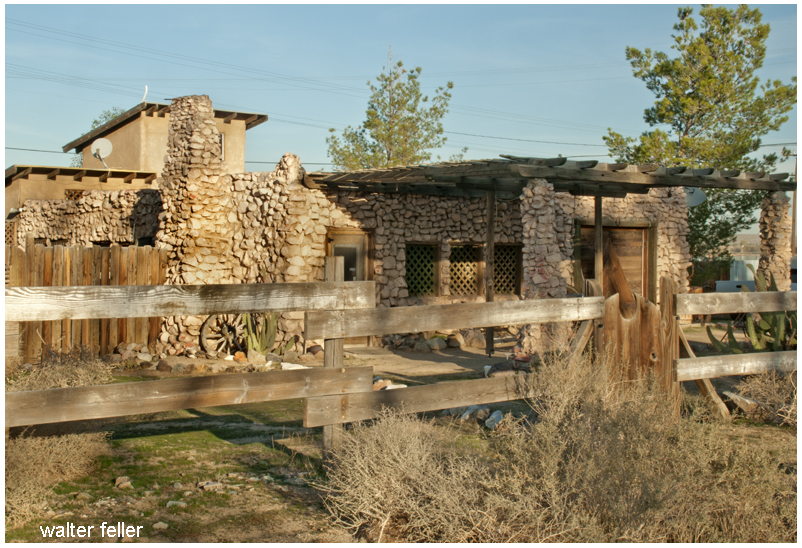
Bill lived right across the street from Bessie, was well acquainted with her, and was in a position to be in the know. He put it this way:
During World War II that [living] room did overtime as a ‘junior brothel’ for any lonesome airman stationed at George. Annie could always get in touch with a shady lady or two when the demand was there. It never really became a steady part of her business, but she was for anything that turned a profit.
There are also wild stories about how youngsters were not allowed in the place, not even during the day, and about thatched cribs, little shed-like structures, that dotted the back yard. However, in the early days as a service station this would seem most unlikely. Nor does it seem reasonable to suppose that Sagebrush Annie’s roadhouse would have brazenly had cribs on the premises with her family and friends in close proximity. Of course, in later years, with her relatives and friends gone, the situation would have been different.
from; Sagebrush Annie & the Sagebrush Route
By Richard D. Thompson
An Invitation to Summit
Letters to Desert Magazine, Oct. 1942
Dear Sir:
When I came over here three months ago, I brought four copies of Desert with me. Needless to say they have become rather dogeared as I have read them from cover to cover several times, and passed them around to my friends who have enjoyed them immensely.

The last day I was in sunny Southern California (it rained all the time I was in Frisco waiting to embark), I made one last sojourn to our desert retreat—the summit of Cajon Pass. Few people know of this unique retreat, except those who pass by on the trains, and then all they see is a street-car tucked away on the side of a hill, 200 yards from the tracks.
The street-car is the former Los Angeles railway’s funeral car Descanso. A group of railfans, known as Railroad Boosters, became interested when it was known the car was to be scrapped, and decided something should be done about it. So far as we were able to tell the Descanso was the only funeral car in existence, and to delegate such an ornate car to the junk heap was not a very fitting end. The L. A. railway then told us that if we could find a place to put it we could have it as a sort of museum piece. After several months of scouting around, we decided on summit. On July 4, 1940, the Descanso was hauled up to summit by flatcar on the Santa Fe. Eight of us spent a very strenuous day unloading the car. It weighed 18 tons.
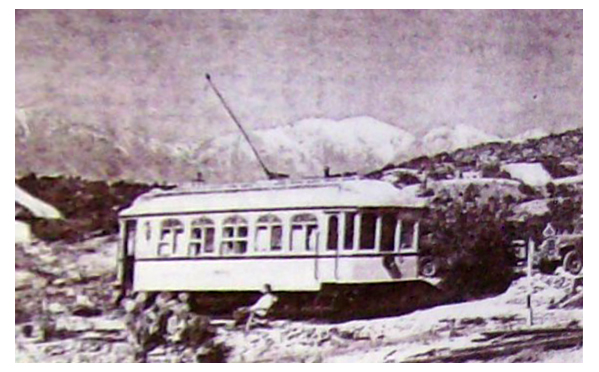
Three weekends were spent in getting the car to its present position, by the tedious process of laying a section of track in front, pulling the car up with a truck by means of block and tackle, then picking up the section in the rear, placing it up front again, etc. Then began the process of scraping off the old paint, removing the seats, and taking out a few of the unnecessary controllers, etc.

In the two years that have passed since its arrival at summit, the Descanso has gradually transformed from a dirty looking old streetcar, to that of a newly painted, well furnished cabin. From the exterior it still has the same general appearance of a streetcar as it still is on wheels on a section of rail, the trolley is still up, and still has the stained glass in the upper halves of the windows.
Quite a change has taken place on the interior though. Only two of the original seats are left in place with a folding table in between. A pot bellied stove, and a wheesy old phonograph well stocked with records, dominate the center of the car, while an icebox, a few chairs and another table and a small but complete kitchen take up the rest of the available space. Eventually we may put some folding bunks in one end, but due to material shortage, we content ourselves with sleeping on the floor in our sleeping bags.
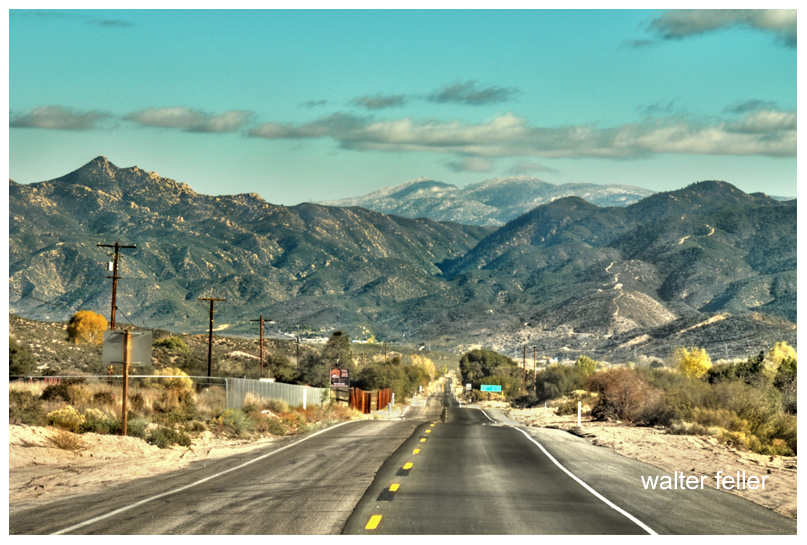
We find it an ideal spot to go on a weekend, either as a home camp for a small hunting expedition, or for hiking up and down the railroad, the mountains, or just to lie around in the sun and watch the trains go by.
For anyone wishing to visit Summit, just go up Cajon Pass on U. S. 66 to Camp Cajon, and turn east (right if leaving from San Bernardino). This road is known as the back road to Arrowhead. It’s about five miles from 66 to Summit which can’t be missed as the road leaves the twisting mountain road onto the level Summit valley road. Off to the left about a quarter of a mile is the railroad station of Summit with its scattering of section houses and the post office. The Descanso is directly behind the station.

In closing I wish to extend a cordial welcome to anyone visiting Summit, and wish I could be there and meet them personally. Until the war ends I’ve got to be content to visit the desert via Desert Magazine.
Robert W. McGrew – Honolulu, Territory of Hawaii
The Hardy Pioneer
by Jean Goldbranson – 1967
As you whiz down the freeway in a well protected automobile, have you ever wondered what life was like in the good old days as the hardy pioneer planned the trip 50 miles into the desert with wagon and a team of horses?
Excerpts from ‘Water Supply Paper Number 224’ published in 1909 by the US Department of Interior states, “A party leaving a supply station to go 100 miles or more into an uninhabited part of the desert must take along everything needed, even to the most minute detail.”

” This means if the trip is to last for two weeks enough hay and grain for each animal and enough provisions to last each man that length of time must be taken.
” For four horses, drawing a wagon that carries for persons and their bedding, provisions, and tools, another team of four horses must also be taken to all sufficient hay and grain to feed the eight horses for two weeks.
” There are but few places in the desert, away from the railroads, where grain or hay of any kind can be procured. As the teams are rarely able to travel faster than a walk, heavy horses that are good walkers should be selected. The tires should be as wide as can be procured. Desirable widths of tires for freight wagons are 6 to 9 inches; for light wagons 3 inches.”
The average Victor Valley pioneer took a week every six months to travel by horse and wagon to San Bernardino, to do his shopping and come back home. Leaving the desert and spending the first night in Cajon Pass at one of the campsites close to the junction of State Highway 138 or Interstate Highway 15 further on down at Cozy Dell Campgrounds. it was another day’s journey to San Bernardino, and after doing shopping and visiting for a couple of days, it was a two-day journey back to the desert Homestead. Now with our sleek automobiles, we whisk down to San Bernardino and 45 minutes, sometimes grumbling because it takes so long.

Drinking java from an old tin can was a way of life and not a song in the past century. Living in the open and eating cowboy beans were part of traveling through the desert before the advent of the auto. The trails of yesterday became our freeways of today. Our present freeway route from Victorville to Barstow parallels the one the freighters to quit their mule trains to sell supplies to the minors and Calico in the 1880s. Instead of having a well-built bridge to span the Mojave as we do today, they forded the river even when it was high.
$150,000 Summit Road Route Being Considered
State Highway Commissioner Darlington has under advisement the matter of which route to choose for the 15-mile state highway to be built from Summit to Victorville at a cost of $150,000. A delegation headed by Louis Evans of Hesperia asked Darlington to choose the route that would include Hesperia on the highway.
Los Angeles Herald, Number 58, 8 January 1919


